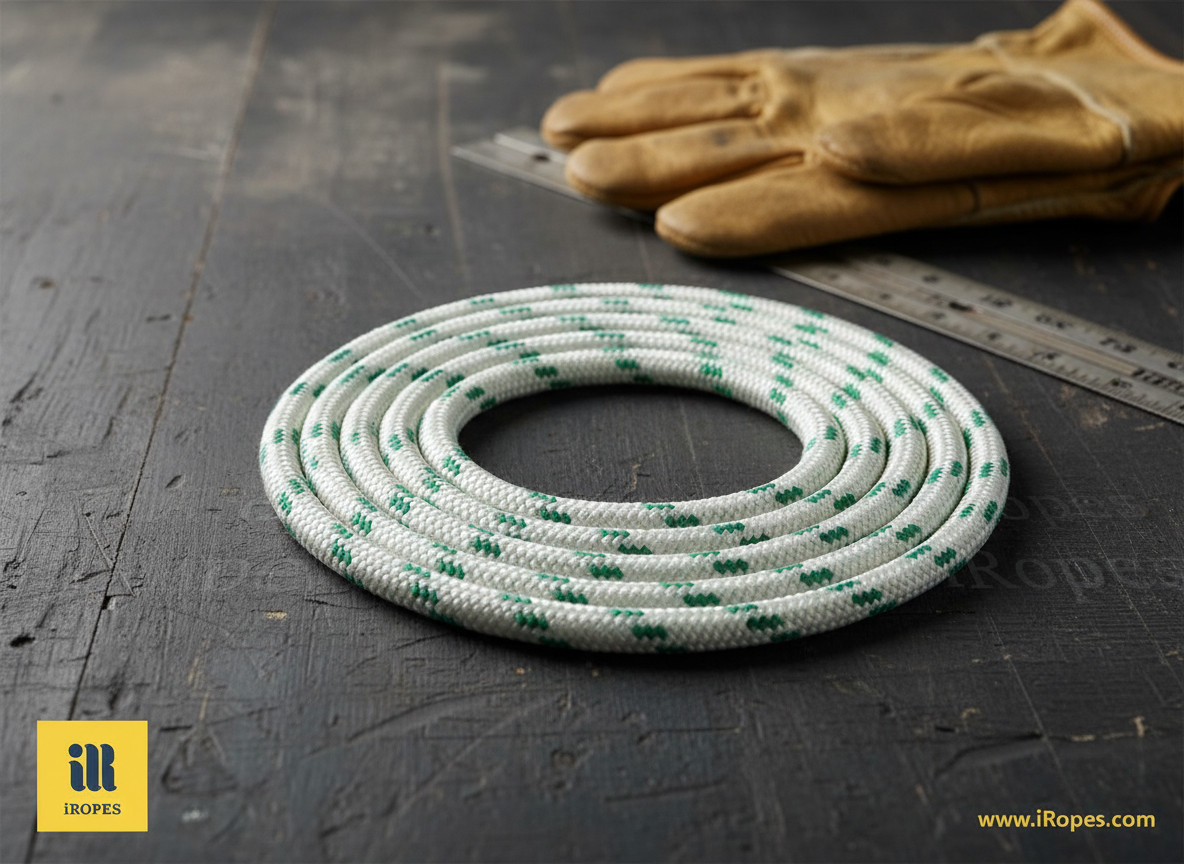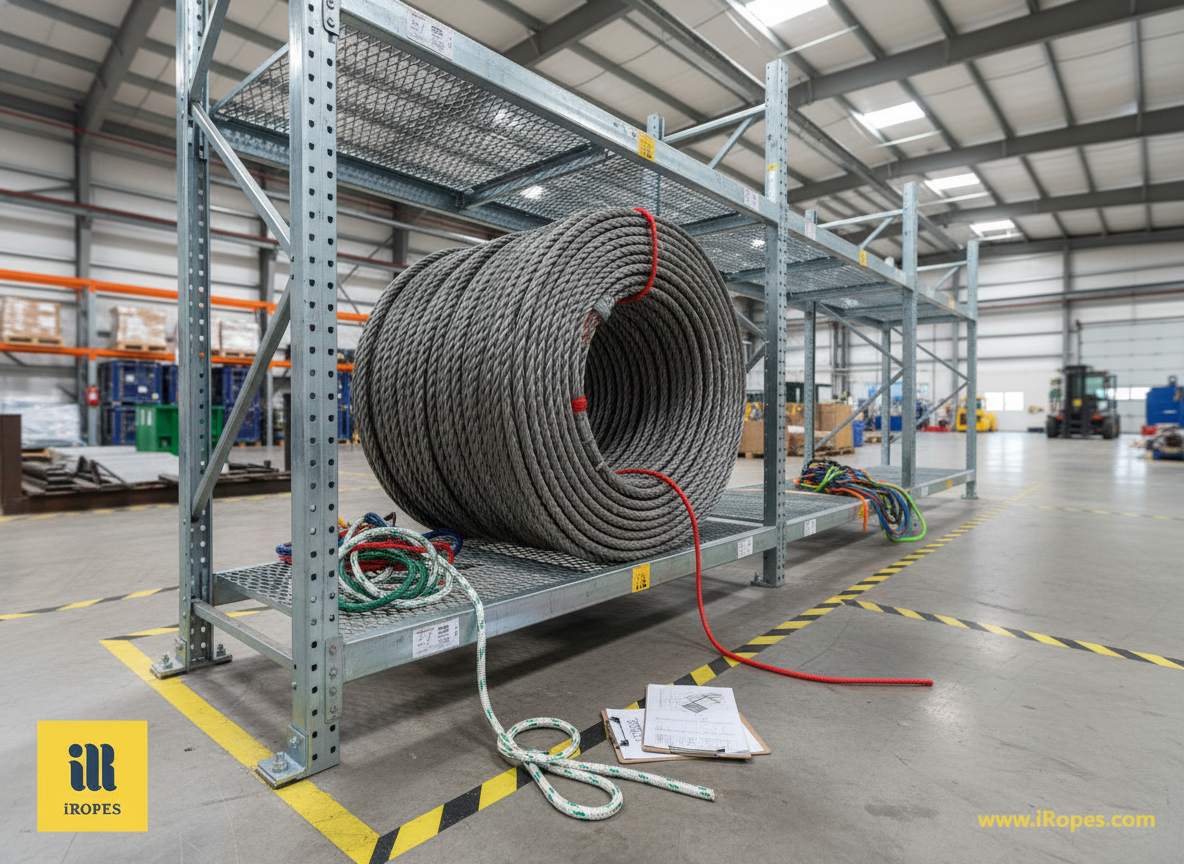A 1-inch nylon rope breaks at 22,600 lb (≈2,260 lb SWL at factor 10), while a 3-inch HMPE line reaches ~250,000 lb breaking strength (≈50,000 lb SWL). Knowing these exact figures helps you size any heavy-duty job, ensuring optimal safety and performance.
What you’ll gain (≈6 min read)
- ✓ Cut material costs by up to 22% compared to generic-sized ropes.
- ✓ Slash engineering time by approximately 40% through instant safe working load calculation.
- ✓ Boost rope lifespan by 15-30% by matching the right fibre to your environment.
- ✓ Secure IP-protected, brand-aligned OEM/ODM ropes, delivered in as fast as 4 weeks.
Many engineers still size ropes through guesswork, often leading to over-engineered lines that waste weight and budget. What if you could pinpoint the exact 1-inch, 2-inch, or 3-inch diameter that delivers the required safe working load with up to 18% less material? In the sections below, we’ll expose common missteps buyers make and reveal the precise calculation method iRopes’ specialists use to cut costs while guaranteeing safety and optimal performance.
Choosing the Right 1-inch Rope for Your Application
After reviewing the basics of rope safety, the next crucial step involves matching the 1-inch diameter with the material that best suits your specific load and environment. Whether you’re anchoring a dock, bundling heavy timber, or configuring a recovery line, the right combination of fibre, construction, and precise calculation can make all the difference, ensuring a smooth operation and preventing hazardous failures.

Three primary fibres dominate the 1-inch rope market:
- Nylon – Offers high breaking strength coupled with noticeable elasticity. This makes it ideal for applications requiring shock absorption, such as marine docking lines where wave impacts are common.
- Polyester – Provides comparable strength to nylon but with significantly low stretch. It’s perfect for stable load holding in static applications like industrial rigging or permanent anchor lines.
- HMPE (Dyneema) – An ultra-high-modulus fibre that delivers the highest strength-to-weight ratio and minimal elongation. It’s excellent for specialised recovery or defence scenarios where weight savings are paramount.
Once you’ve selected a material, the safe working load (SWL) is derived directly from its breaking strength. For heavy-duty ropes, a common recommendation is to apply a safety factor of 5 to 10, depending on the task's criticality. For instance, a 1-inch nylon rope with a documented breaking strength of 22,600 lb would have an SWL of approximately 2,260 lb when applying a factor of 10, or 4,520 lb with a factor of 5. The calculation is straightforward:
SWL = Breaking Strength ÷ Safety Factor
Always reference the manufacturer’s test data, as moisture, temperature, and ageing can all affect the effective breaking point. If you operate in a marine environment, remember that nylon can lose up to ten percent of its strength when wet, making a more conservative safety factor advisable.
“Choosing a rope is not just about diameter; it’s about understanding how the fibre behaves under load, temperature, and time. The safest system starts with the right material-diameter pair.” – Senior Rope Engineer, iRopes
Many buyers also encounter the classification “Type 1” versus “Type 2” rope. Type 1 ropes are constructed from conventional synthetics such as nylon or polyester, providing reliable performance for most commercial tasks. In contrast, Type 2 ropes utilise high-modulus fibres like HMPE, Kevlar, or Zylon, delivering superior strength-to-weight ratios and much lower stretch. For a 1-inch rope, the Type 2 option (HMPE) can provide up to fifteen times the tensile strength of a comparable polyester rope, all while remaining buoyant and highly resistant to UV degradation. If your project demands the lightest possible line without compromising load capacity, a Type 2 HMPE rope is the logical and most effective choice.
To summarise, begin by assessing the application’s load profile. Then, select a fibre that meets the required stretch and environmental resistance. Finally, compute the SWL using the appropriate safety factor. This systematic approach ensures that the 1-inch rope you order not only meets the technical specifications but also aligns precisely with your industry’s safety standards.
Having clarified the fundamentals of 1-inch rope selection, we can now explore how diameter influences load capacity and material choices for larger ropes.
Selecting the Optimal 2-inch Rope Based on Strength and Use Cases
When a project calls for a 2-inch rope, balancing raw power with handling ease becomes crucial. Heavy-duty applications, such as offshore mooring or large-scale industrial lifting, require a line capable of sustaining immense loads while remaining manageable during deployment and installation.

Your material selection profoundly shapes every other performance characteristic. For this specific diameter, nylon continues to offer excellent shock absorption; however, its increasing weight can become a significant handling issue at longer lengths. Polyester, conversely, provides a low-stretch profile and superior UV resistance, making it a popular choice for static mooring lines that must hold position for extended periods. Manila, though less common, offers a natural grip and an appealing aesthetic often sought by architects for decorative installations. Polypropylene floats and resists many chemicals, making it suitable for utility-grade ropes that require buoyancy. However, the true game-changer is HMPE (Dyneema); its ultra-high-modulus fibres deliver breaking strengths far exceeding traditional synthetics, while keeping the rope light enough for crew-handled deployment.
- Material Suitability – Match the fibre to your environment and dynamic load requirements.
- Load Rating Verification – Always confirm the breaking strength and carefully calculate the safe working load.
- End-Finish Selection – Choose splices, thimbles, or chafe guards that perfectly complement the application.
Real-world deployments clearly illustrate these critical choices. A 2-inch nylon line is frequently used on offshore platforms, where wave-induced shock must be absorbed without risking damage to anchors. Battle rope manufacturers, on the other hand, often prefer a 2-inch polyester core wrapped in a softer sheath for gym installations, as its low stretch translates into predictable and consistent training resistance. In heavy industrial lifting, a 2-inch HMPE rope can confidently replace a steel cable, significantly cutting weight on the hoist while delivering a safe working load that complies with stringent safety regulations.
Custom Solutions
iRopes engineers 2-inch ropes to your exact specifications—selecting fibre, colour, length, and specialised terminations while maintaining ISO 9001-validated quality. Our OEM/ODM service ensures the finished product aligns perfectly with your brand and performance criteria, and our IP protection safeguards your proprietary designs throughout the process.
Addressing a common query, “What is the thinnest but strongest rope?” – the answer decisively points to HMPE. Even as the diameter expands to 2 inches, HMPE retains a strength-to-weight ratio that can be fifteen times higher than comparable polyester. Moreover, it remains buoyant and exhibits exceptional resistance to abrasion and UV exposure. This combination makes it the premier choice for customers who demand maximum load capacity without the bulk and weight associated with traditional steel cables.
Having explored the material palette and practical deployments for 2-inch ropes, our discussion naturally progresses to the extreme performance requirements that define 3-inch rope applications.
Evaluating the Best 3-inch Rope for Extreme Heavy-Duty Needs
Having thoroughly explored the material palette and practical deployments for 2-inch ropes, we now turn our attention to the heavyweight champion of the line-up: the 3-inch rope. When a job demands raw power, minimal stretch, and unrivalled durability, only a select few fibres can truly meet such an immense challenge.

For a 3-inch diameter, high-modulus polyethylene (HMPE, often marketed as Dyneema) stands out as the material of choice. Its tenacity exceeds 100 g/denier, yielding a breaking strength in the neighbourhood of 250,000 lb. By applying a conventional safety factor of five, the safe working load (SWL) settles around 50,000 lb – a figure that empowers you to lift, tow, or secure assets that would otherwise demand the bulk and weight of a steel cable.
When you calculate SWL, the formula remains consistent with how you calculated for smaller ropes:
SWL = Breaking Strength ÷ Safety Factor
What fundamentally changes is the sheer magnitude of the numbers involved, and consequently, the critical need to verify that all your associated hardware (winches, shackles, splices) can handle the same immense class of load.
Always confirm that the end-finish you select – whether an eye splice, thimble, or custom termination – is rated for at least the same breaking strength as the rope itself. This is critical for maintaining system integrity and safety.
Typical Load-Capacity Benchmarks for a 3-inch Rope
- HMPE/Dyneema – Breaking strength ≈ 250,000 lb; SWL ≈ 50,000 lb (safety factor 5)
- Aramid (Kevlar) – Breaking strength ≈ 180,000 lb; SWL ≈ 36,000 lb (safety factor 5)
- High-strength Polyester – Breaking strength ≈ 120,000 lb; SWL ≈ 24,000 lb (safety factor 5)
These impressive figures translate directly into high-stakes, real-world scenarios. Offshore towing vessels, for instance, frequently employ a 3-inch HMPE line to secure colossal oil rig anchors, where a single line must withstand the immense pull of dozens of thousands of tonnes of equipment. Defence contractors select the same diameter for rapid-deployment recovery nets, which must survive sudden, extreme shock loads without elongating or failing. Even large-scale decorative installations – imagine a suspended sculpture spanning an entire stadium – rely on the low-stretch nature of HMPE to keep the artwork perfectly level and stable under significant wind-induced sway.
Therefore, choosing the right 3-inch rope begins with precisely matching the material’s intrinsic strength to your application’s peak load, and then unequivocally confirming that every accessory within the system shares that same formidable rating. iRopes can engineer a bespoke solution: you decide the colour, length, reflective inserts, or glow-in-the-dark threads, and we will deliver a rope that meets ISO 9001-validated performance while meticulously protecting your intellectual property.
With the heavyweight options now clarified, the next logical step is to present your project specifications to our dedicated design team and secure a custom quote that perfectly aligns with both your schedule and your budget.
Request Your Tailored Rope Solution
Choosing the right 1-inch, 2-inch, or 3-inch rope ultimately hinges on a careful assessment of material, load profile, and environment. As this article has demonstrated, HMPE offers unmatched strength-to-weight properties, while nylon and polyester suit specific stretch or UV resistance needs. iRopes specialises in tailoring dynamic and UHMWPE ropes to your exact strength requirements, meticulously selecting the optimal diameter, colour, reflective inserts, and terminations. All our products are backed by ISO 9001 quality certification and comprehensive IP protection, ensuring both performance and peace of mind.
If you require a bespoke specification or a competitive quote that aligns perfectly with your project timeline, simply complete the form above. Our expert engineering team will then work closely with you to finalise the perfect, customised solution.